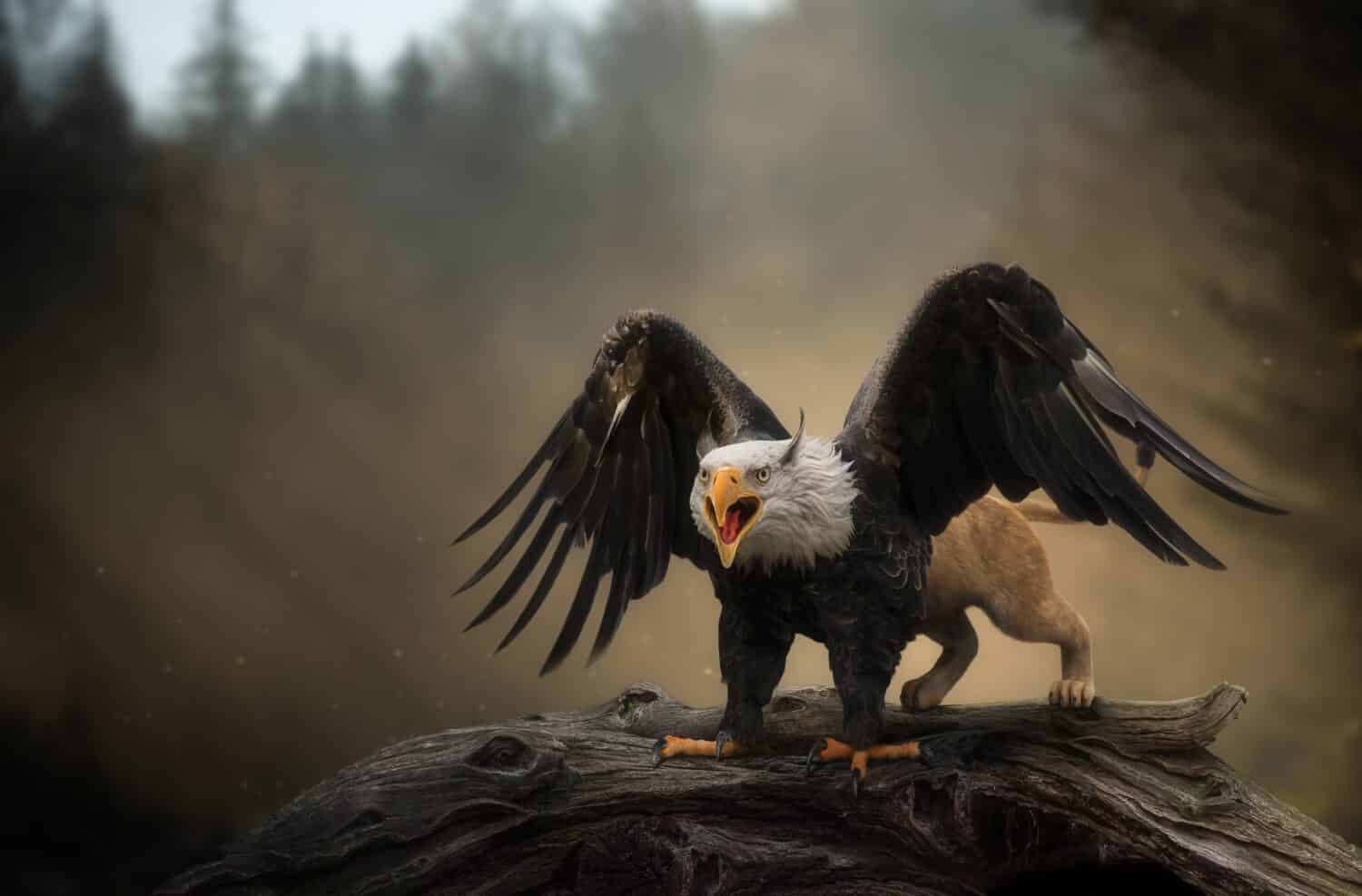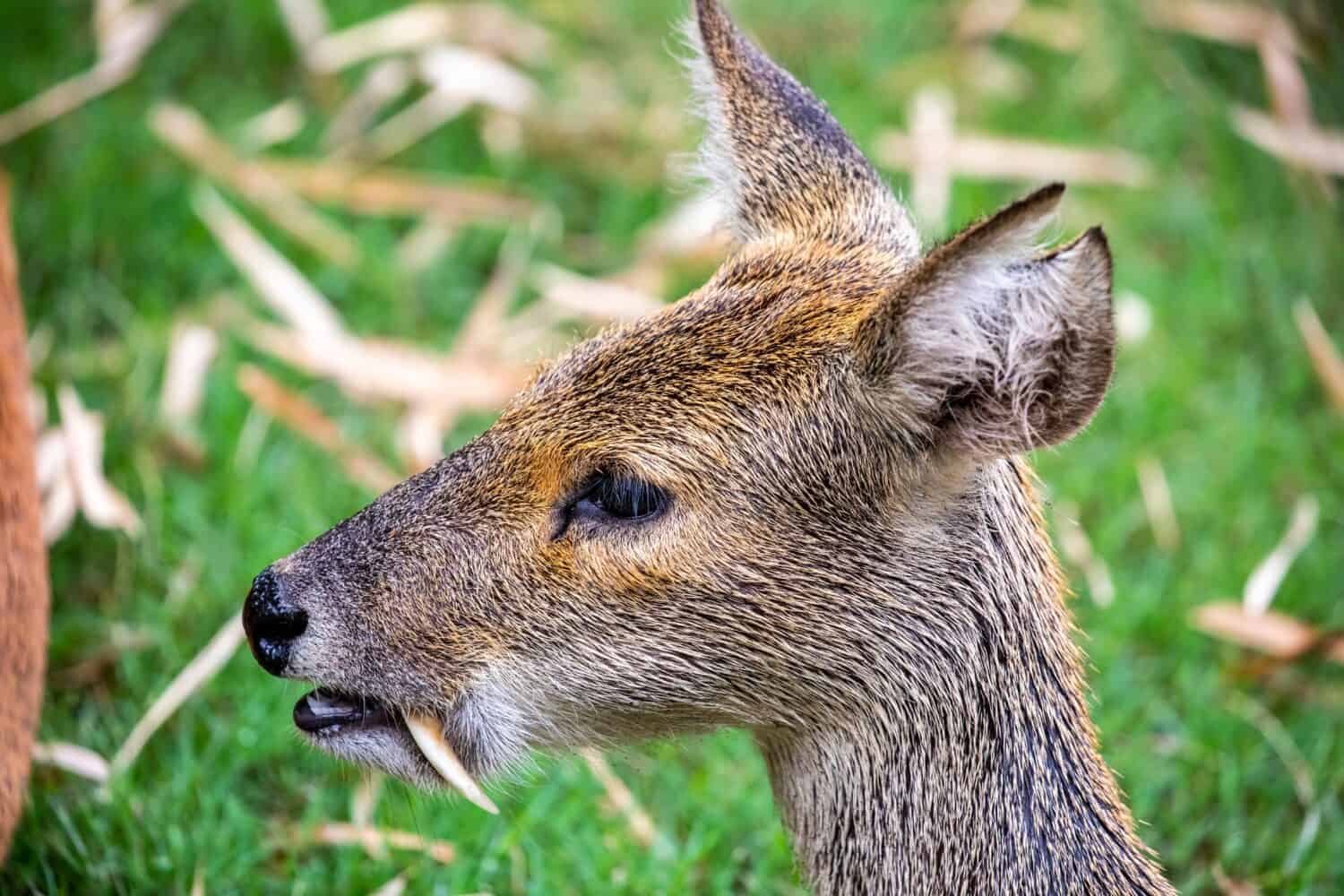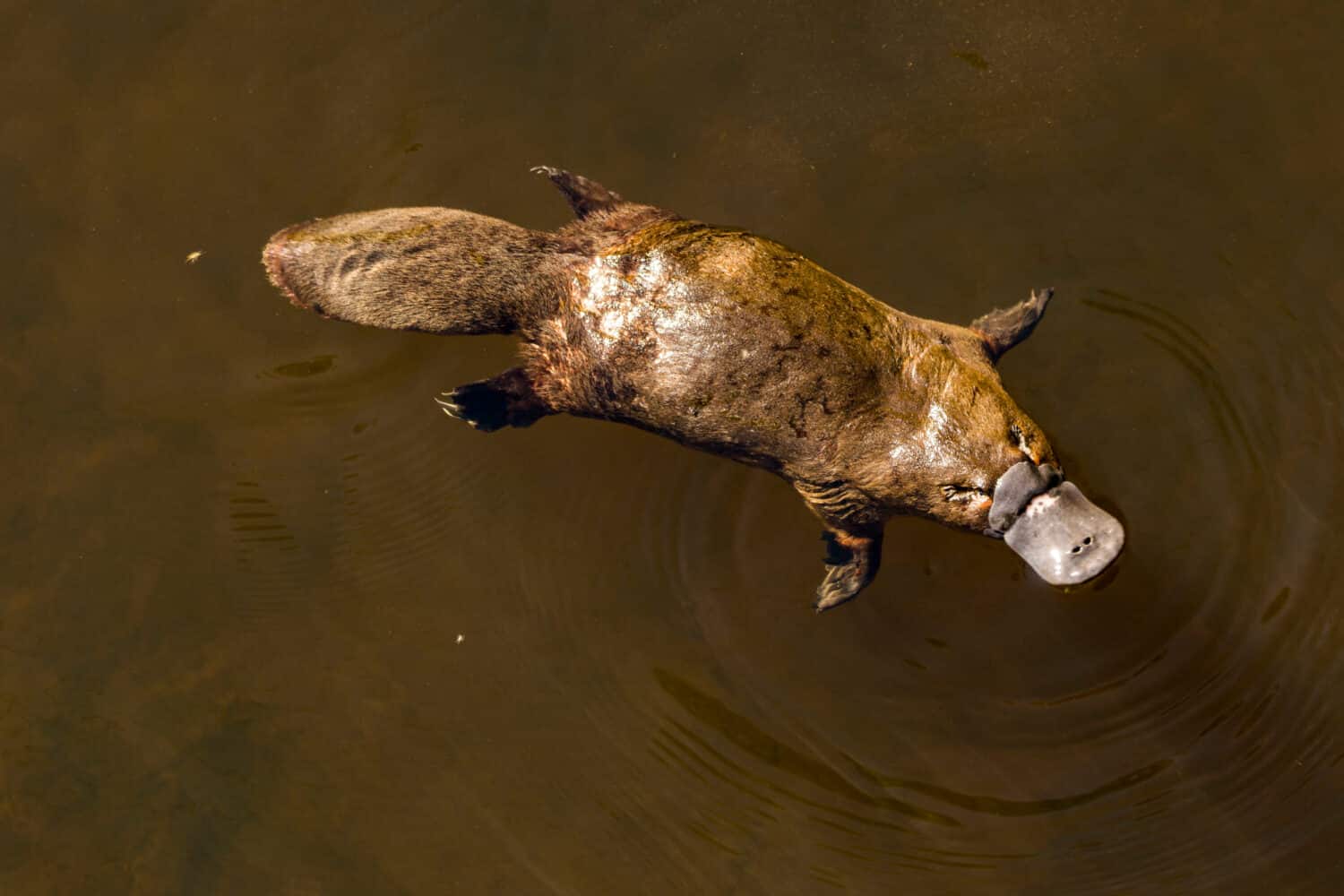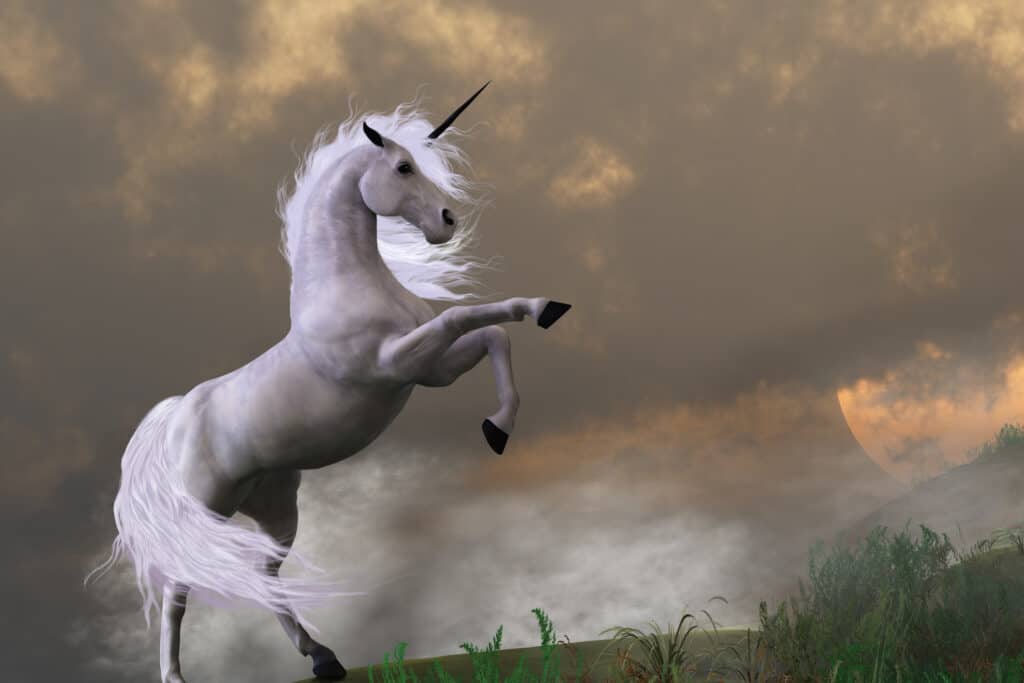There are many different kinds of mythical creatures. From Greek mythology to the ancient ancestors of humans, there are many different kinds of legendary beasts. But where did they come from, and how real were they? Throughout this article, you’ll find that some of these fabled cryptids were actual animals that walked, swam, and flew among us.
Dire Wolves
The dire wolf is an extinct canine that lived approximately 125,000 to 9,500 years ago, during the Late Pleistocene and Early Holocene periods. The Aenocyon dirus was a large predator. It could extend to five feet from the top of its head to the end of its tail. Dire wolves typically weighed about 150-200 pounds. They typically lived in the Americas as well as in eastern Asia. Dire wolf remains are findable in a variety of different ecosystems. They lived in the plains and grasslands of North America, in the savanna of South America, and in the steppes of eastern Asia. With an incredibly strong bite, dire wolves typically preyed on horses, bison, and pronghorns.

The dire wolf lived a long time ago, during the Late Pleistocene and Early Holocene periods.
©Rodney, CC BY 2.0 via Wikimedia Commons – License
Griffins
While not necessarily real, griffins are easily one of the most recognizable legendary creatures in existence. From Greek mythology to inspiring Buckbeak from Harry Potter, the griffin actually was inspired by another prehistoric creature: the Protoceratops. The Scythians, a nomadic people who originated from central Asia, found Protoceratops remains in the same region where they would prospect gold, and would tell others of what they found while on their nomadic escapades. Eventually, word reached the Greek people about a beaked gold-guarding creature. The Greeks thought that it lined up with their history of a griffin, birthing a legend that has lasted centuries.

Griffins are fabled to have a lion’s legs and an eagle’s head and wings.
©funstarts33/Shutterstock.com
Camelopard
Maybe the most misunderstood creature on the list, the camelopard is the medieval name for what we know today as giraffes. Misunderstood as a vicious monster, camelopards were thought to be a cross that of a leopard, due to their similar spots, and that of a camel, because of the way the giraffe shares that similar, bored, disinterested view that a camel has. Camelopards were considered otherworldly, because of their height and long necks. This turned them into a bit of a mythical creature, even though today you can go see this ‘vicious’ creature in most zoos.

Camelopard is the medieval name for a giraffe.
©Marc Stephan/Shutterstock.com
Blemmyae
One of the more mythical ones on this list, the Blemmyae are called the ‘headless men.’ Often rumored to have eyes in their chest and ears in their armpits, the myth of the Blemmyae has spread far and wide, and has cemented its place as one of the more creepy mythical creatures. However, this is yet another example of exaggeration affecting history. The Blemmyae were actually the ancestors of the Beja people in Nubia. They often interacted directly with the Greeks and the Romans, and eventually, the Romans attempted to invade the Blemmyaes. Herodotus, a Greek scholar and historian, described the Blemmyae as ἀκέφαλοι, which means headless, as in lacking a leader within an organized state. This eventually became what they were famous for: being a group of headless people.
Dobhar-chú
Often described as a mix of a dog and an otter, or a dog and a fish, the Dobhar-chú is a part of Irish folklore. Dobhar-chú roughly translates to ‘water hound’ or ‘hound of deep.’ Perhaps just an ancient ancestor of the otter, the Dobhar-chú has many stories surrounding it. The most famous tale is the story of the murder of Grace McGloighlin. She was a young girl who was killed by a creature that was terrorizing the waters she was bathing in, in the year 1722.
Giant Squid
The giant squid is a creature that lives in the deepest parts of the ocean. The biggest recent measurements of this creature put it at around 39 to 43 feet long. It is one of the largest creatures on the planet, as well as the largest invertebrate on the planet. The Architeuthis dux is findable in a variety of places. It lives in the deepest parts of the North Atlantic Ocean, near Newfoundland, Norway, and the northern British Isles. In addition, it is also discoverable in the North Pacific Ocean, near Japan. It can also be found in the southwestern Pacific, off of the coast of New Zealand and Australia.

Giant squid can get up to 45 feet in length.
©Shiva N hegde/Shutterstock.com
Kraken
Off of the coast of Norway lies the Kraken, an ancient mythical creature that is infamous for consuming the ships of Vikings and sailors. While it may have just been misunderstood to be a massive man-eating creature, it’s more likely that it was actually just a giant squid. They’re both described as gigantic, sea-dwelling creatures with multiple long tentacles, almost similar to an octopus as well. However, it’s differentiated from a giant squid because of how it claimed its prey. It’s said that if a Kraken couldn’t sink a ship with its tentacles, it would swim around the ship, creating a whirlpool to sink the ship.

The Kraken is rumored to have tentacles similar to that of an octopus.
©Allexxandar/Shutterstock.com
Moby Dick
Moby Dick is perhaps amongst the most famous of all the cryptids, alongside the Loch Ness Monster and Bigfoot. However, there isn’t really anything cryptic about Herman Melville’s novel. It was based on the true story of how a gigantic sperm whale sank the Essex. The Essex was a ship that had just left for a two-year whaling odyssey. The captain of the ship, George Pollard Jr., recounted the story of his sunken ship to Melville, inspiring the story of Moby Dick; or, the Whale. The whale in question was supposedly 85 feet long, and targeted the Essex at a speed of about three knots. It destroyed the ship from underneath. This caused the captain and crew to be forced to flee on other boats to safety. They would tell the story and pass it down from generation to generation, eventually inspiring the novel.

Moby Dick is based on a sailor’s story of a sperm whale.
©Thierry Eidenweil/Shutterstock.com
Charybdis
Charybdis is the name of the ancient Greek monster who was a challenger to heroes of ancient Greek epics. Characters like Odysseus, Jason, and Aeneas all faced Charbydis. Located off of the coast of Italy in the Strait of Messina, Charybdis is likely just a whirlpool that claimed the lives of ancient sailors. However, just across from underneath the rock where Charybdis is supposed to live, lies Scylla, another mythological Greek monster. This created the idiom ‘to be stuck between Scylla and Charybdis,’ which is a position the sailors navigating this strait would find themselves in, as they couldn’t avoid one without running into the other.
Imoogi
The Imoogi is a Korean mythological creature that is said to resemble dragons. However, imoogi are more serpent-like. Imoogis tend to be more associated with water and clouds, as opposed to the fire that most dragons are associated with. They were rumored to get to be as long as 45 feet, weighing about 2,200 pounds. The Imoogi, however, may have just actually been a Titanoboa. The Titanoboa is a now-extinct serpent that could reach up to 45 feet long and weighed upwards of 2,500 pounds.
Werewolf
Werewolves are another ancient cryptid, dating back all the way to 2100 BCE. They were first mentioned in the Epic of Gilgamesh. However, more modern-day understandings of werewolves come from poetic texts from ancient Greece and Rome. Werewolves became prominent in European folklore and spread to the New World when Europeans began to settle there. There would be attacks on animals and cattle through inexplicable means, which became the basis of werewolf ‘sightings.’ However, it was more than likely just a large pack of wolves that had attacked the animals.

Werewolves are prominent in European folklore.
©GSoul/Shutterstock.com
Bunyip
The southeastern Australian mythical creature called Bunyip is a tale of Aboriginal origins. It is rumored to be a sizable, black creature that is typically found in swamps, rivers, and other sources of water. Described as an amphibious creature, the Bunyip is like a seal or a dog. Measuring about four to six feet in length, they are coated with shaggy black and brown fur. Fossils that were discovered throughout Australia have been associated with the Bunyip. Some of those fossils contain bones and remains that are much larger than that of an ox, buffalo, manatee, or hippopotamus.
Vampire Deer
Vampire deer, also called water deer, are much different than regular deer. Instead of having antlers, the vampire deer possesses fangs. Yes, actual fangs, like fangs on a vampire. Originally hailing from Korea and China, the Hydropotes inermis has migrated outside of just Asia, extending all the way to even the United States. The scientific name of this creature translates to ‘without armor,’ as they lack antlers. Instead, they have fangs that serve a sole purpose: as a weapon. They are also called water deer because they prefer to live in an environment with a main source of water: lakes, rivers, and swamps are their preferred habitats. While they may look like a beautiful doe, these creatures are strong, stocky, fanged, and dangerous!

Water deer (also known as vampire deer) protect themselves with their fangs.
©Danny Ye/Shutterstock.com
Hobbits
Not just clever mythical creatures from Middle-earth, hobbits are also an early human ancestor. Scientifically known as Homo floresiensis, the remains of these early humans were first discovered in Indonesia in 2003. They typically stood at just over three feet tall, and they had a defined brow ridge, a tiny skull, and short legs paired with large, flat feet. Scientists have offered different theories on why they are so much smaller than Homo sapiens. One theory explains their short stature as a result of insular dwarfism, also known as island dwarfism. This occurs when an animal has limited resources to help them grow, but they also don’t have any large predators actively hunting them.
Platypus
Platypuses are amphibious mammals that are native to Australia. Sometimes called a duckbill, the platypus is an interesting creature, to say the least. It’s the only mammal that can lay eggs, it has a large, flat bill similar to a duck, and it also has white patches of fur under its eyes, with light to dark brown fur on its body. The Ornithorhynchus anatinus typically feeds on invertebrates that live at the bottom of the waterway it inhabits, in addition to frogs, fish, and insects. It is an adaptable creature: over the course of time, it has become better suited for their aquatic environments. Their fur is insulating and waterproof, and they’ve developed a more flat, streamlined body that is better suited for swimming.

Platypuses are identifiable due to their large, flat bill.
©Lukas_Vejrik/Shutterstock.com
Nemean Lion
Part of the large web that is Greek mythology, the Nemean lion is another mythical creature with origins based on real life. The lion is fabled to have golden fur that is impenetrable by any human weapon. It also has claws that are as sharp as swords and is strong enough to break through any armor. Hercules is the ancient hero that was said to be the only one able to defeat the lion, and he did so as part of his 12 labors. As the story goes, he was successful in his task of defeating the lion, being able to overpower it without the use of any human weapon. Lions were living, at the time of this story, in the northeastern part of the Peloponnese. This cryptid is more than likely just a result of storytelling, a huge part of Greek mythology.
El Chupacabra
The Chupacabra is a part of American folklore. In the southwestern United States, it is a hairless, dog-like creature that preys upon sheep, goats, other farm animals, and domestic pets. However, descriptions vary across the border. In Latin America, the Chupacabra is a large, reptilian-like beast that is about the same size as a smaller bear.
One thing in common among these different descriptions: it is vampire-like, as it supposedly drinks the blood of the livestock it attacks. The thought of a beast like this roaming the American farmlands is a scary one. However, the story of the Chupacabra is not as scary. It was based on farmers’ tales and stories of dogs infected with a parasite called Demodex. Demodex mites cause a skin cancer in dogs known as mange. Mange causes hair loss, scabs, and sores to form, as well as making the skin become crusty. Now you can see why the farmers must have been scared of these dogs!
Unicorns
Unicorns are probably the most famous mythical creature of all time. So, how did they get to be so well-known, if they aren’t real? Their origins are discoverable in South Asia, in the Indus Valley Civilization. Dating back to 3300 BCE to 1300 BCE, the unicorn is identifiable in stamps from this period. What looks like a horse with a horn is actually just a profile of an aurochs, an extinct wild ox from the same period. Eventually, the myth of the unicorn grew, as sailors would come back to shore with ‘unicorn horns’ from their travels. They would sell these false horns as unicorn horns; however, they were actually narwhal horns. As the narwhal hadn’t been introduced yet to Europeans, they were an easy sell as ‘unicorn horns’ as they are also long, spiraled horns.

The unicorn is a popular mythical creature with a few possible origins.
©iStock.com/CoreyFord
Summary
Many mythical creatures find origins in real-life animals. From Moby Dick to werewolves, there are a lot of different inspirations behind the many different cryptids we know today. Paired with the human being’s natural desire to tell stories, some of these creatures have a lot more mythology than just being based on an animal. And yet, it is an interesting notion to learn where certain myths come from, and how long they have stood the test of time!
The photo featured at the top of this post is © Martin Pelanek/Shutterstock.com
Thank you for reading! Have some feedback for us? Contact the AZ Animals editorial team.






